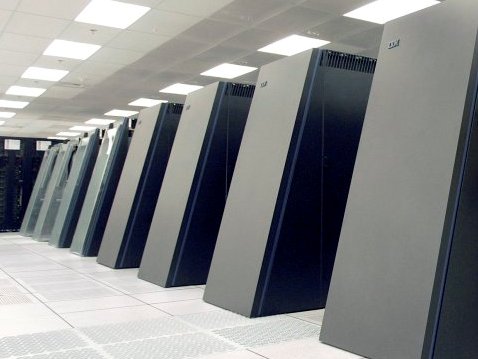Blue Gene /L retains top supercomputer title
IBM takes on petaflop barrier as top supercomputers named

IBM's Blue Gene /L machine has topped the Supercomputing Top500 league tables once again. However, supercomputers as much as 12 times as fast have already been announced.
For now, Blue Gene /L's 280 million floating point operations per second (280 TFlops) places IBM in pole position in the latest list of supercomputers.
As recently as November 2000, the fastest computer on the planet was capable of just 4 TFlops. Currently, a desktop PC with a pair of high end graphics chips and a quad-core CPU can crank out just over one TFlop.
Blue Gene /L packs no less than 131,072 IBM PowerPC processor cores and a total memory of 32 tebibytes (approximately equivalent to 32TB). It guzzles a terrifying 1.5 megawatts of power and sprawls over 2,500 square feet of floor space.
Blue Gene /L is installed at the US Department of Energy's National Nuclear Security Administration facility in California. If you're wondering what exactly it's used for, well, try this for size:
"BlueGene/L is optimized to run molecular dynamics applications at extreme speeds to address materials aging issues."
Predicting global climate change
So now you know. Other supercomputers are used for computationally intensive tasks such as predicting global climate change, oil prospecting and medical research.
Get daily insight, inspiration and deals in your inbox
Sign up for breaking news, reviews, opinion, top tech deals, and more.
However, impressive as Blue Gene /L's capabilities are, it's expected to be comprehensively beaten before the end of the year.
First up will be IBM's own follow up, imaginatively known as Blue Gene /P. This computer will support up to 884,736 PowerPC CPUs and should be fully operational later this year.
IBM claims the /P system will deliver a mind-boggling three petaflops of processing punch. That's around 12 times as much as the current Blue Gene incumbent.
Sun Microsystems is also working on a new machine capable of around two petaflops. Known as the Constellation, the first example will be based on AMD's upcoming Barcelona PC processor.
But all these supercomputers pale into insignificance compared to the mighty Blue Gene /Q. Still under development, IBM has not released full technical specifications of this monstrous machine. However, the /Q's peak performance is expected to top 10 petaflops.
Jeremy Laird
Tech.co.uk was the former name of TechRadar.com. Its staff were at the forefront of the digital publishing revolution, and spearheaded the move to bring consumer technology journalism to its natural home – online. Many of the current TechRadar staff started life a Tech.co.uk staff writer, covering everything from the emerging smartphone market to the evolving market of personal computers. Think of it as the building blocks of the TechRadar you love today.